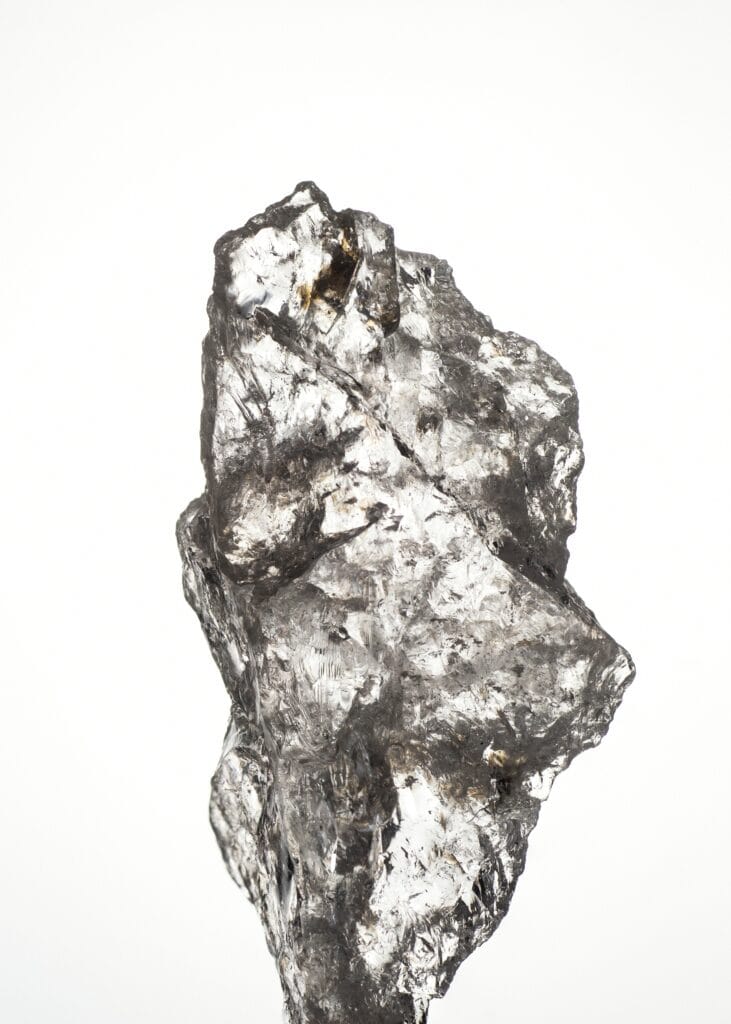A Comprehensive Guide to Platinum Investment Benefits and Risks
Investing in platinum can be a lucrative way to diversify your portfolio, provided you understand the risks and benefits associated with it. Platinum is a rare metal, making it valuable as an asset and offering investors high liquidity.
This guide provides readers with an overview of platinum investment, looking at the different types of investments, the benefits of investing in platinum such as its intrinsic value due to its limited supply, as well as the various risks associated with market risk, counterparty risk and volatility. It also explains what strategies can be employed to capitalize on changes in platinum prices, how to protect wealth in case of currency collapse and other related topics to consider when investing in platinum.
Whether you are just starting out or experienced, this guide provides insightful and comprehensive knowledge which can help inform better decisions.
Key Takeaways
- Platinum is a rare, heavy metal with a high melting point, making it an attractive investment option due to its various applications, rarity, and comparable price point to gold or silver.
- Investing in platinum offers investors a wide range of benefits, such as a higher value, increased liquidity, and diversification potential, however it carries with it high price volatility and liquidity risks.
- Investors should be aware of the associated risks before investing, such as market risk, counterparty risk, and the potential for fluctuating prices due to the political and economic climate.
Overview of Platinum Investment
Platinum is a highly sought-after precious metal that is utilized for a variety of applications. It is commonly used in jewelry, but its primary purpose is in the production of catalytic converters for automobiles, trucks, and buses. Additionally, platinum is employed in the electronics industry for computer hard disks and thermocouples, and in the medical industry for pacemakers and chemotherapy drugs. As a result of its many applications, platinum is an attractive investment option for many investors around the world. The World Platinum Investment Council (WPIC) was established in 2017 to promote the use of platinum as a long-term investment and to provide reliable data on platinum prices.
This section will provide an overview of platinum investment and discuss the different types of investments available. Platinum is one of two precious metals, along with gold, that have been used for thousands of years as currency and for jewelry. It is also comparable to gold and silver, with a comparable price point to both. The ratio of platinum to gold is 30 times rarer, making it an attractive investment for those looking for an alternative to gold. The spot price of platinum is subject to frequent fluctuations, but is generally more predictable than other commodities. Most of the world’s platinum is mined in South Africa, and the approximate weight of a 6-inch cube of platinum is comparable to that of an average-sized human.
What is Platinum?
Platinum is a heavy, precious, silver-white metal that is both soft and ductile, boasting a high melting point and excellent resistance to corrosion and chemical attack. It is widely used in a variety of industries, such as electronics, automotive, dentistry, and jewelry. Platinum is exceptional rare, with a ratio of 30 times rarer than gold. This makes it an attractive investment option for investors looking to diversify their portfolios and obtain a hedge against inflation. The price of platinum is highly predictable, which allows investors to make informed decisions when investing in the metal.
The process of utilizing platinum to craft jewelry involves melting and reshaping the metal into desired shapes. The value of platinum is primarily determined by its weight and purity, with the price of the metal fluctuating on a daily basis. Platinum is also employed in a variety of industrial and manufacturing applications, including catalytic converters, fuel cells, electric power generation, hydrogen fuel cell technology, flutes, stents, pacemakers, computer hard drives, cancer medications, and Parkinson’s Disease treatments. Platinum is renowned for its remarkable resistance to corrosion or rust, and approximately 50-60% of the global production of platinum and palladium is utilized in the automotive industry.
Investing in platinum offers numerous benefits, such as high liquidity, intrinsic value, and limited supply. The spot price of platinum is subject to frequent fluctuations, meaning that mining companies are less vulnerable to rapid changes in price. Moreover, the difference between the lowest and highest points is substantial, giving investors a wide range of opportunities to take advantage of. Furthermore, platinum can be melted and reshaped for more convenient storage.
Different Types of Platinum Investments
Investors may choose to invest in platinum through the acquisition of physical bullion, exchange-traded funds (ETFs), certificates, or mining companies. Physical platinum is one of the most popular forms of investing, as it allows investors to hold the metal in their possession and retain physical ownership of it. Exchange-traded funds (ETFs) are traded on stock exchanges, enabling them to track the price of the asset in question. ETFs offer the advantage of diversification within the platinum market, as well as avoiding the risk associated with owning physical bars and coins. Futures contracts typically involve a promise to deliver a predetermined quantity of platinum at a predetermined price on an agreed-upon future date. Options contracts, on the other hand, offer the holder the right but not the obligation to buy or sell a predetermined quantity of the asset at a predetermined price on a future date.
Furthermore, many investors choose to invest in traditional assets such as stocks, mutual funds, and ETFs. Mutual fund portfolios may include investments in platinum, enabling investors to diversify their investments and protect their wealth in the event of a fiat currency collapse. Investors may also consider investing in a platinum mining company, which can provide a degree of diversification within the platinum market.
Overall, investors have a range of options for investing in platinum, from physical bullion and ETFs to futures and options contracts. Hedging and speculating are two strategies that can be employed for investing in platinum. Exchange Traded Notes (ETNs) can also be used to monitor the value of a particular asset, such as platinum. Furthermore, platinum bullion typically involves a commitment to deliver at a later date.
Benefits of Investing in Platinum
Investing in platinum can offer investors a range of advantages. Platinum is a precious metal that is relatively rare and commands a high market value. It is a tangible asset, with a limited global supply and an industrial demand that is expected to increase over the coming years. As a store of value, platinum is highly sought after during times of economic or political instability. Investors can capitalize on the opportunity to reinvest in platinum when prices decline, allowing them to take advantage of the profits they made the first time.
The New York Metals Exchange (NYMEX) and other exchanges provide investors with the opportunity to purchase physical platinum, as well as exchange traded funds (ETFs) and mutual funds. This allows investors to capitalize on the increasing value of platinum and to easily buy and sell investments.
Additionally, investing in platinum can provide an alternative asset class to traditional investments, offering an additional basket of options for diversifying your portfolio in multiple ways. These advantages make investing in platinum an attractive option for many investors.
High Liquidity
Investing in platinum can offer investors a high level of liquidity, making it an attractive option for those looking to quickly convert their assets into monetary gain. The New York Metals Exchange (NYMEX) and other exchanges provide investors with the opportunity to purchase physical platinum, as well as exchange traded funds (ETFs) and mutual funds. This makes it easier for investors to buy and sell investments, enabling them to take advantage of short-term price fluctuations of the precious metal.
The liquidity of platinum investments is uncertain and should be carefully considered before investing. Investing in physical platinum carries a lower risk than stocks or ETFs as the fund’s holdings are backed by tangible assets. This provides a reliable demand and allows investors to capitalize on the increasing value of platinum without having to worry about storage. Moreover, investors can benefit from the potential for capital appreciation without having to worry about the storage of physical assets.
When investing in platinum, investors should monitor the current market prices of platinum and stay informed of any political developments that may influence the price of the precious metal. This will help investors make more informed decisions when it comes to their investment strategy and capitalizing on the rising price of platinum. Furthermore, investors should wait until they can realize a significant return on their platinum investments before selling, as this is the optimal duration for investors to hold their investments in order to maximize their profits.
Intrinsic Value
The intrinsic value of platinum investments is derived from its status as a tangible asset, which is relatively rare and commands a high market value. This intrinsic value provides investors with a greater potential for capital appreciation and a hedge against inflation, as the value of physical platinum tends to remain relatively stable even when the value of other investments fluctuates. As such, investors can benefit from the increasing value of platinum and capitalize on the opportunity to reinvest in platinum when prices decline.
Platinum is also a desirable asset for those seeking to protect their wealth in the event of a fiat currency collapse, as the limited availability of platinum increases its price per ounce. The amount of platinum mined is only a small proportion of the amount of gold mined, making it an attractive option for those looking to safeguard their finances in the face of potential economic instability. Additionally, platinum retains its value provided its weight and purity remain intact. This makes physical platinum a favored option for investors.
Investors should be aware of the average annual return of platinum over the past five years, as reported by the World Platinum Investment Council (WPIC), as well as the strategies that speculators and hedgers employ when trading platinum futures. This will help investors make more informed decisions when it comes to their investment strategy and capitalizing on short-term price fluctuations of an asset such as platinum through futures contracts.
Limited Supply
Platinum is a rare metal with a limited global supply, making it an attractive option for investors seeking to store value. The global supply of platinum is projected to reach 8.2 million troy ounces in 2022, with South Africa being the leading producer. Nevertheless, the market is expected to experience a deficit in 2023 due to the increasing demand and limited supply. This makes platinum a more advantageous option than gold in the foreseeable future.
The high demand and value of platinum are largely attributed to its industrial applications, such as catalytic converters used in the automotive industry. Additionally, platinum is used in a variety of industries, such as electronics, medicine and jewelry, making it an ideal option for investors seeking to capitalize on the rising price of the precious metal. Investing in mining companies is also a viable option for investors.
As a store of value, platinum is highly sought after during times of economic or political instability. Investing in physical platinum is an effective way to prepare for the worst-case scenario and protect one’s wealth in the event of a fiat currency collapse. Moreover, investing in platinum can provide an alternative asset class to traditional investments, offering an additional basket of options for diversifying your portfolio in multiple ways.
Risks of Investing in Platinum
Investing in platinum has many benefits, such as its high liquidity, intrinsic value, and limited supply. However, it is important to be aware of the potential risks associated with such investments. The high price volatility and liquidity risk associated with platinum investments can lead to significant losses. Additionally, the market for platinum is less liquid than that of gold and silver, which could result in large price changes due to the influence of a smaller number of traders.
Furthermore, the political and economic climate can have a major impact on platinum prices, as well as the global economy, leading to significant fluctuations in prices. It is important to understand the risks associated with investing in platinum and to take the necessary steps to mitigate them.
Volatility
Platinum investments are characterized by a high degree of volatility, owing to a range of factors including supply, demand, industrial usage, mine production, and geopolitical dynamics. The price of platinum is subject to the volatility of the commodities market, similar to the fluctuations experienced in the stock market. This means that the price of platinum can be significantly affected by economic or political uncertainty, such as the recent pandemic and the global financial crisis.
Investors should consider their time horizon, risk tolerance, and investment strategy when engaging in platinum futures trading, as the price of platinum can change quickly. Unlike stocks, platinum investments typically prioritize stability over short-term gains, as many investors prioritize the long-term security of their investments.
It is important to understand the risks associated with investing in platinum, such as volatility and market risk, before making any investment decisions.
Market Risk
Investing in platinum carries market risk due to its volatile nature and price fluctuations. The New York Metals Exchange, the Tokyo Commodity Exchange, and other exchanges are responsible for setting the spot price of platinum and other precious metals, and these prices are subject to change depending on the current market sentiment and demand.
This means that the price of platinum is vulnerable to currency devaluation, inflation, and other economic conditions. In addition, the World Platinum Investment Council suggests that investors consult with a financial advisor to assess their investment portfolio and develop a suitable investment strategy.
Therefore, it is important to understand the potential market risks associated with investing in platinum before making any investment decisions.
Counterparty Risk
Counterparty risk is a type of risk associated with platinum investments. It is the potential for one party to a transaction to fail to meet their contractual obligations. This is a risk that investors should be aware of when investing in platinum, whether it is through physical bullion, ETFs, futures, or other financial products.
If an option owner does not wish to fulfill their contractual obligations, they would be forced to forfeit the funds already invested in the contract. Investors should take the time to understand platinum investments and the risks associated with them. Proper risk management strategies should be employed to reduce potential losses.
Summary
In conclusion, platinum is an attractive investment option that offers several potential benefits, such as value appreciation, increased liquidity and diversification potential. Furthermore, its limited global supply is expected to cause a deficit in 2023, making it an attractive option for investors seeking store value.
However, the investment also comes with numerous risks associated with its highly volatile nature. Therefore, it is important for investors to understand and be aware of these risks before investing in platinum, and consult with experienced platinum experts when necessary in order to make sound decisions.
In any case, the potential rewards of a well-thought-out platinum investment portfolio can make it a lucrative avenue for those willing to put in careful research, stay mindful of market conditions, and seek professional help when needed.
Popular Questions
Is it a good idea to invest in platinum?
Overall, investing in platinum can be a good idea for investors who have the knowledge and risk tolerance to make informed decisions. Its rarity, strength over gold, and volatile nature can offer up significant returns, but major losses are always possible.
With its unique qualities, platinum may be a beneficial addition to certain investment portfolios.
What is one disadvantage of investing in a precious metal such as platinum?
Investing in precious metals such as platinum can be risky as prices can be highly volatile depending on global market conditions and geopolitical events. In addition, investors may incur storage costs for their physical investments, as well as the risk of buying precious metals through investor loans.
As a result, investing in platinum can involve significant risks for some investors.
Is it better to invest in gold or platinum?
It is difficult to definitively say whether it is better to invest in gold or platinum as both have their own characteristics that can make them more attractive to investors at different times.
However, based on its stability, popularity and accessibility, gold generally provides the safest investment option.
Is platinum a good investment 2023?
Considering positive macroeconomic and fundamental drivers, along with increased consumption supported by decreasing pollution in the automotive industry expected in 2023, platinum could be a profitable asset to invest in.
Social Sharing
The owners of this website may be paid to recommend Goldco. The content on this website, including any positive reviews of Goldco and other reviews, may not be neutral or independent.
You can view Peter's Author page here.






